
http://www.iaeme.com/IJM/index.asp 1 editor@iaeme.com
International Journal of Management (IJM)
Volume 8, Issue 6, Nov–Dec 2017, pp. 1–8, Article ID: IJM_08_06_001
Available online at
http://www.iaeme.com/ijm/issues.asp?JType=IJM&VType=8&IType=6
Journal Impact Factor (2016): 8.1920 (Calculated by GISI) www.jifactor.com
ISSN Print: 0976-6502 and ISSN Online: 0976-6510
© IAEME Publication
IMPACT OF OPTIMISM ON LEADERSHIP
EFFECTIVENESS: A REVIEW OF LITERATURE
Prof. (Dr.) Shyamalendu Niyogi
Director, AIBS, AUUP, Swati John, Research Scholar, AUUP
ABSTRACT
Leadership includes a broad range of area. One can improve the position and
trustworthiness of the organization by concentrating on leadership effectiveness. With
such leadership skill one can establish the team culture in the organization and
enhance the support of everyone in the organization. Most importantly it provides for
all the employees of the organization to implement accomplishment in every task they
perform. The present study aims to identify the relationship and impact of optimism on
leadership effectiveness. The study is based on review of literature which depicts that
optimism helps in the decision making, cooperation among employees, citizenship
behavior and trust by the leader which obtain leadership effectiveness. The study
suggest that organizations which concentrate on long term return should have
optimistic leadership because the impact of optimistic leadership is stronger when
long term objectives and goals has to be achieved. The study found that (i) optimism is
connected with sentimental and behavioral dimension which influence the level of
trust among people therefore optimism helps in developing trust among leader and
follower. (ii) Optimistic leader will not be affected and troubled in uncertain
situations. The optimistic leader has the capability to see the opportunity in the
difficult situation because of their approach. Optimism will work as strength in the
uncertain situation for the organization. (iii) Optimism helps to create cooperative
climate in the organization, it increases the citizenship behavior of the employee for
each other. The cooperation and citizenship behavior develop team spirit which brings
effectiveness. (iv) Leader can also develop strong self-efficacy among his subordinates
with is optimism because optimism will make subordinate think positive about them
which will develop self-efficacy and performance will improve. The finding delineate
that there is strong relationship between optimism and leadership effectiveness.
Key words: Leadership, Leadership Development, Optimism and Leadership
Effectiveness.
Cite this Article: Prof. (Dr.) Shyamalendu Niyogi, Impact of Optimism on
Leadership Effectiveness: A Review of Literature. International Journal of
Management, 8 (6), 2017, pp. 1–8.
http://www.iaeme.com/IJM/issues.asp?JType=IJM&VType=8&IType=6

Prof. (Dr.) Shyamalendu Niyogi
http://www.iaeme.com/IJM/index.asp 2 editor@iaeme.com
1. INTRODUCTION
The importance of leadership in organization is expressed by various researchers; this has
been found that an effective leader can bring success to the organization which is not giving
sustainable result. Leader plays a very important role, therefore, the organization chooses very
cautiously the leader positions in organization. The companies which do not gauge the long-
term benefit of the organization will make mistake in determining the person who is perfect to
be the leader. Two decades earlier the development of leadership was focused on very few
people in organization, but now, this philosophy has been changed. Organizations look to the
potential of maximum people in the organization and then decide the one who is fit for
leadership position.
Now, in this scenario, the development of employee is not in making an individual perfect
for his role, in-fact it is giving more and more opportunities to the employees so that in depth
learning can take place. People will learn from mistake and in future possibility of mistake
and errors will be reduced as the people know the ins and outs of their role. Beyond learning,
another aspect of an employee is important and that is his behavior, because what type of
leadership will bring result, it will vary from organization to organization and situation to
situation. Therefore the suitable personality elements should be determined so that which
elements are fit for any leadership role can be known and seen while providing the
opportunities to the employees. This gives an understanding that in coming time the leader
who can motivate and develop better team with coordination among members can only give
sustainable results. It is essential for leaders to maintain relationship and is ideally provide
appreciation, reward, faith and information with followers to have motivated and committed
people under him. Commitment in subordinates can reach the organization at a very high
level; transformational leadership develops commitment in people, (Rowold, Borgmann and
Bormann, 2014). The model was developed pertaining how leadership impact the
performance of people in organization. It has been found that CEO‟s ethical leadership, with
ethical organizational culture and program and practices of organization implemented
ethically, has an exemplary impact on performance or organization, (Eisenbeiss. et al, 2015).
Research supports the argument that the representation of servant leadership style by
managers can generate a suitable culture of organization in which servant leaders develop
successful ways among lower-level managers. Research support that in profit organization
and in demanding challenging environment leadership style supports a lot in generating
results and profits for the organization. Leadership style impacts the performance culture
which influences the people and people perform accordingly, thus leadership style is crucial
for the effective performance in an organization, (Melchar. D and Bosco. S, 2010). This gave
a clear picture that leadership is being impacting the organization and the performance of
organizations. There is no perfect style which is suitable for all type and size of organization
but it will surely make the difference. A good performing organization may turn to poor
performer and poor performing organization may turn to great performing organization
because of leadership skills prevailing and experienced by the people in that organization.
2. OBJECTIVE
The objective of the study is-
To find the impact of optimism on leadership effectiveness.
To find the various dimensions of optimism and leadership effectiveness.
To understand the effectiveness of various leadership styles in different context.
To find the relationship between optimism and leadership effectiveness.

Impact of Optimism on Leadership Effectiveness: A Review of Literature
http://www.iaeme.com/IJM/index.asp 3 editor@iaeme.com
3. CONCEPTUAL FRAMEWORK
Many researches in social science and in Behavioral Science have connected the continuous
role of leadership and its influence on people and organization. For the same purpose the
Path-Goal theory of Management Science has been applied to test the legislative leadership,
which proved that the concepts used in the theory are indeed applied and seen being
practically used in legislative leadership, (Hedlund. R 1978). It has been determined that in
voluntary organizations, to make people accept the set standards and values through
socialization, can only be done through effective leadership. Hierarchy in the organization
does not impact to develop value socialization; role of leadership has a momentous impact on
developing the same, (Sylvia. R. D and Pindur. W, 1978). Leader behavior is reviewed and
recognized that leadership effectiveness is not only the way leader influences the follower but
also the achievements of desired results from the followers. Leadership effectiveness requires
proper setting of standard performance, smooth implementation evaluation of tasks of
followers on every stage and immediate and effective response to the feedback received after
evaluation of task and responsibility. To do so communication by leader plays a very crucial
role to know the root of the issues and resolve it to get results, (Hollander. E. P., 1979).
Organizational structure impact the corporate image, goodwill and assumptions about the
organization, it was highly determined that with time the changes in structure must be
implemented by the organization but the effectiveness and smooth change implementation is
fully dependent on administrative leadership. Administrative leadership can only plan and
implement to be fruitful for the organization. Therefore leadership can directly impact the
corporate image and goodwill of organization, (Petrie H and Alpert D 1983). Change is
inevitable in any organization but if the leader and people who have to implement the change
have to be ready and coordinately implement such change to get the desired outcomes. This is
where the role of leader is imperative, as the finding suggests behavior and skills of leader
impacts the execution of change. The communication, motivation, coaching and team
building are the elements needed strongly to be shown by the leader while change is
implemented. In case any of the element is weak or absent it is sure to end up with gap in
performance of the organization and will result in complications in outcome (Gilley. A et all,
2009). Therefore an effective leader is good communicator and coach for his team, and with
team building and motivation, leader bring people together with positive spirit to work for the
change.
Research have founded that the leadership effectiveness is strongly affected by the
competency of the leader to perform the task. The leader, if highly competent for the role or if
not competent to perform the role, influences the trust and reaction of follower. The reward
and flexibility of the leader impact the followers to perform better. The leader competency
ensures that the mistakes made by subordinates will be rectified and proper guidance will be
provided and the true efforts of the subordinate will enhance by the rewards received by the
subordinates. This is how the effectiveness is higher if the leader task competency and reward
dependency is high Justis. R (1975).
Sahu and Bharti (2009) suggests that leadership is understood by examining its key
variables: leader characteristic and its traits, leadership behavior and its style, group member
characteristics and internal and external environment, therefore ,effective leadership refers to
attaining desirable outcomes such as productivity, quality and satisfaction in a given situation.
Many people believe intuitively that personal characteristics strongly determine leadership
effectiveness. The belief that certain personal characteristics and skills contribute to
leadership effectiveness in many situations is the universal theory of leadership. As per this
theory leadership traits are universally important that apply in all situations. Characteristics

Prof. (Dr.) Shyamalendu Niyogi
http://www.iaeme.com/IJM/index.asp 4 editor@iaeme.com
associated with leadership can be classified into three broad categories: personality traits,
motives and cognitive factors.
Source: Sahu and Bharti (2009) “Strategic Leadership” Pg 98.
As per this theory, leadership traits are universally important that apply in all situations.
Characteristics associated with leadership can be classified into three broad categories:
personality traits, motives and cognitive factors.
3. LITERATURE REVIEW
Scheier and Carver (1985), express Optimism as the propensity of an individual to look after
the outcome even if the problems are associated. Optimistic individual believes that the end
result will be good and pessimistic person believes that end result will not be good for them.
Hoy et al (2008) have identified that academic optimism include cognitive, sentimental and
behavioral dimensions which impact the trust of the students and parents and faculty trust is
the stronger perspective which ensure enactment of efficacy and learning among students.
This helps in generating very high positive image and interaction among all for betterment
and stronger trust. Gurol. M and Kerimgil. S (2010) determines that a faculty belief that
emphasis on the student and efforts by them can ensure the better learning and improvement
of knowledge among students. Further the trust of parents and students on the faculty and
their methods will strengthen it and bring collective efficacy. White and Shullman (2010),
providing competitive advantage is an essential for the leaders now a day, as the environment
is changing rapidly in today‟s scenario, the possibilities of uncertainty are increasing.
Therefore, the leader who is comfortable with uncertain situation and is flexible as per the
situation is indeed important in an organization to be competitive. Accordingly, a leader who
is positive towards the uncertainty and looks towards the uniqueness of organization in
continuity will generate better competitive advantage for any of the organization. Isen. Alice
(2001), have identified that for positive thinking and positive approach toward problem
solving and variety of decision making will result in innovative and creative results for the
organization. Positive approach also enhance the employee satisfaction and coordination from
people, which in return provide better performance from them which results in satisfaction of
customers and positive feedback on service from the outsiders of the organization. Especially,
in health care industry in products related to it require positive leadership approach for the

Impact of Optimism on Leadership Effectiveness: A Review of Literature
http://www.iaeme.com/IJM/index.asp 5 editor@iaeme.com
better outcomes of the organization. Suresh and Venkatammal (2010) have explored that
climate of an organization delineates the limit of all the employees to cooperate and show
citizenship behavior for each other in various roles and responsibilities. The organization
climate itself is a complex thing as it is related to people and their behavior, it has been
suggested that in any organization, the cooperation, willingness to help co-workers and
support towards employer and organization, enhances the capability of the company to have a
positive climate. Further, it has been determined that this is not possible to implement without
the leadership which has optimistic philosophy. To bring positive climate leadership is the
key player to bring positivity. On the contrary, when people fail, they believe external
influences are responsible for the failure, generally when any individual fails, he look into the
details and tries to gauge the reason of failure and research findings have suggested that
certain reasons of failure occurs due to factors like, lack of self-confidence and certain
influences from the environment. The study investigated that the sales employees who are
failing in performance or showing low performance, when the effective way of interactions
are done with them and their self-efficacy are enhanced ,and also they believe in optimism,
they tend to perform better and with enthusiasm. Dixon and Schertzer (2005). It has been
determined that performance of sales employees is enhanced when they have high self-
efficacy and optimistic approach.
Magnano et al (2015) have determined that there are various challenges faced by the
leader to finalize a decision because considering many elements and sometimes uncertainties
impacts the organization decision making very complex and difficult. It has been identified
that optimism plays role in effective decision making by the leaders. The empirical survey has
found that optimistic approach of a leader impacts immensely the decision making
capabilities and effectiveness of a leader. Optimistic leaders are adaptive and with limited
resources they have ability to think and get result. Ashraf et al (2012), building a workforce
which is committed toward organization will be lucrative for any organization, here research
study delineates that optimism, goal setting and employee engagement are able to generate
and increase the organizational commitment. It was being found that these factors should be
implemented in a proper process to achieve organizational commitment. Firstly the proper
goal setting of task and people have to be done and communicated well, then leader should
ensure implementation of employee engagement, work place optimism should be brought in
the system, structure and culture of the organization. This process will help organization to
achieve the organizational commitment from the employees. Three factors namely goal
setting, employee engagement and optimistic approach result in employee‟s commitment
when implemented with systematic process. According to Tombaugh (2005), leader with
Optimistic thinking are able to exert thought process to give challenge to difficulties and
complexities. They are able to view the positive aspects of the complex and difficult situations
and therefore put efforts to come over it and they perform till they resolve the complexity.
Jackson et al (2002), found the optimism effects the personality and the behavior of an
individual, which in turn impact the performance of people around them, the reason for this
impact is „ability to generate learning atmosphere‟. Findings suggest that on the basis of
ideology of an individual, the optimistic people can easily be differentiated from pessimistic
individuals, as they are not complicated and crucial on various issues. Optimistic people do
not take much stress and have mastery in controlling self when faced with difficulties on the
other side this is not the case with pessimistic people as they are stressed and disheveled. This
is also found that such behavior is related to the performance shown by the people and the
optimistic behavior helps in creating better learning among the people in the organization.
Smith et al (2006), found that negative thought and behavior get the attention of the
people, if the manager is the one who pin-points the negative aspects of the employee and



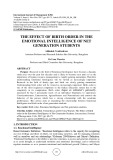
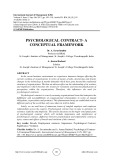
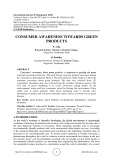
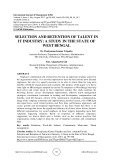

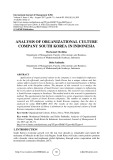
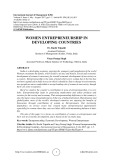
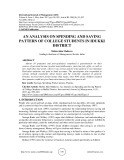


![Câu hỏi ôn tập Tâm lý học quản lý [chuẩn nhất]](https://cdn.tailieu.vn/images/document/thumbnail/2025/20251125/hathunguyen04er@gmail.com/135x160/25191764124376.jpg)
![Cẩm nang chăm sóc và nuôi dạy trẻ tăng động giảm chú ý [chuẩn nhất]](https://cdn.tailieu.vn/images/document/thumbnail/2025/20251118/kimphuong1001/135x160/4241763431998.jpg)


![Sổ tay Hướng dẫn tự chăm sóc trầm cảm [chuẩn nhất]](https://cdn.tailieu.vn/images/document/thumbnail/2025/20251029/kimphuong1001/135x160/3711761720335.jpg)
![Đề cương Tâm lý học xã hội [chuẩn nhất]](https://cdn.tailieu.vn/images/document/thumbnail/2025/20251028/c.dat0606@gmail.com/135x160/99271761707421.jpg)
![Câu hỏi ôn thi Nhập môn khoa học nhận thức [chuẩn nhất]](https://cdn.tailieu.vn/images/document/thumbnail/2025/20251021/aduc03712@gmail.com/135x160/48471761019872.jpg)

![Đề cương môn Tâm lý học sinh tiểu học [chuẩn nhất]](https://cdn.tailieu.vn/images/document/thumbnail/2025/20251007/kimphuong1001/135x160/51781759830425.jpg)



![Tâm lí học lứa tuổi và sư phạm ở tiểu học: Bài thuyết trình [chuẩn nhất]](https://cdn.tailieu.vn/images/document/thumbnail/2025/20250918/vuhoaithuong14@gmail.com/135x160/90941758161117.jpg)
